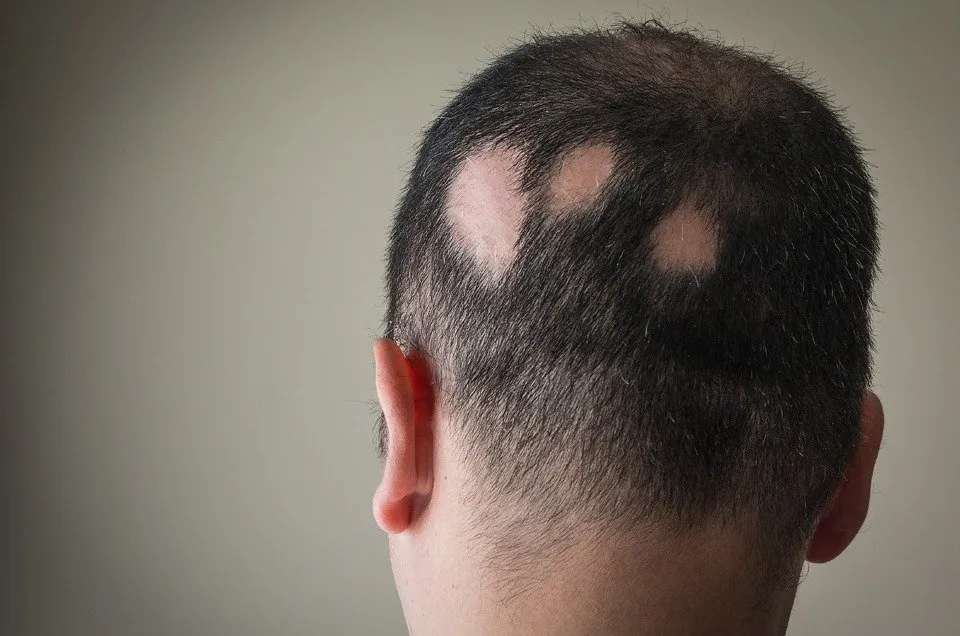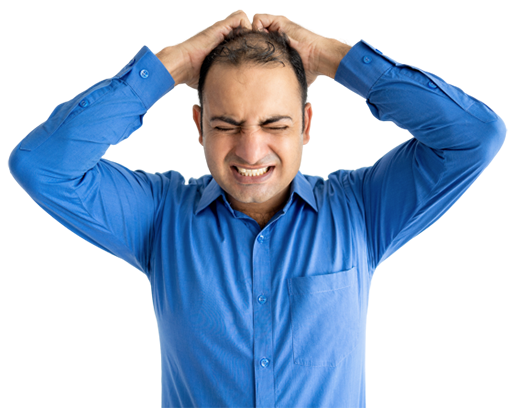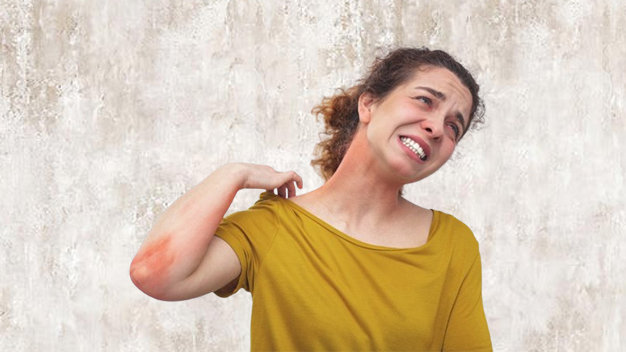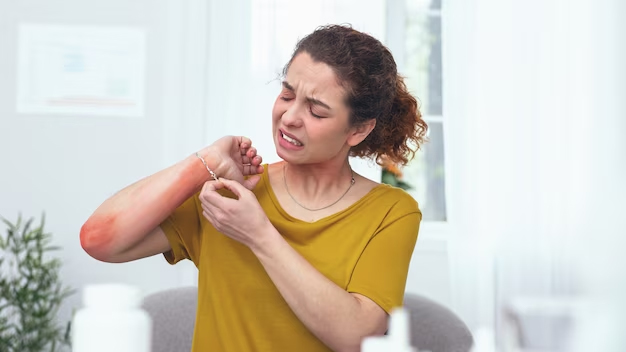On This Page
Alopecia (Indralupta) – Causes, Symptoms, and Ayurvedic Treatment
रोमकूपान्रुणद्ध्यस्यतेनान्येषामसंभव: l
तदिन्द्रलुप्तंरुज्यंचप्राहुश्चाचेतिचापरे
Alopecia refers to hair loss. It may affect either scalp only or the entire body. Loss of hair can be temporary or permanent. It may be due to heredity reasons, hormonal variations, other underlying medical conditions, or aging. The condition is more commonly seen in men. Ayurveda explains this medical condition as Indralupta.
Causes of Alopecia
Normally people lose about 50 to 100 hairs per day. This is not commonly noticeable as new hairs are growing almost at the same rate. Hair loss is said to occur when new hair is not replacing the lost hair.
Following factors may contribute to hair loss:-
- Hereditary Factors: It is the most common cause of hair loss and happens usually with aging. It commonly occurs gradually and will be in predictable patterns. In men, there will be a receding hairline and bald spots and in women thinning of hair along the crown of the scalp is observed.
- Hormonal changes and medical conditions: Hormonal changes due to pregnancy, childbirth, menopause, thyroid problems, etc., and medical conditions like scalp infection by ringworm, a hair-pulling disorder called trichotillomania, etc. can lead to Alopecia.
- Medicines and supplements: Hair loss can be caused as a side effect of certain drugs, used in the treatment of cancer, high blood pressure, arthritis, heart problems, depression, gout, etc.
- Radiation therapy: Hair lost due to radiation may not grow back easily.
- Mental stress and anxiety: People may experience a temporary thinning of hair due to some physical or emotional shock.
- Hair treatments: Unhealthy hairstyling and hair treatments involving the application of hot oil, coloring, straightening, etc. can lead to hair loss.
In Ayurveda, Indralupta is caused by vitiation of Vata dosha along with Pithadosha in hair follicles. Kapha dosha along with Raktadathu forms a covering in these follicles and prevents the formation of new hairs.
Symptoms of Alopecia
Alopecia can appear in different ways, depending on the actual cause behind it. It may occur rapidly or progressively and can affect only the scalp or the whole body.
Signs and symptoms of hair loss include:
- Gradual thinning of hair on top of the head
- Circular or patch like spots without hair
- Sudden loosening of hair
- Hair loss all over the body
- Scaly patches that spread over the scalp
Ayurvedic Reference of Alopecia (Indralupta)


“Dr. Gupta’s IAFA assures effective Ayurvedic management in Alopecia. IAFA is deeply concerned about the ultimate cure of its patients from all types of illness. Institute of Applied Food Allergy® is a trustworthy Ayurvedic institution for all your health-related worries”.
Be with IAFA for styling your life through better health!!
– Dr. Sahil Gupta (B.A.M.S., M.H.A.)
Ayurvedic Allergy Specialist
CEO & Founder of IAFA®
At last, Easier Alopecia Management

Trusted by
More than 90,000 Patients

Convenient
at-Home Treatments

9.2 / 10
Customer Satisfaction Score
Ayurvedic Treatment for Alopecia
Ayurveda incorporates internal as well as external medicines in the management of Alopecia.
Internal Medicines for Alopecia
Following medicines can be advised based on type and site of infection.
- Triphala Kashayam
- Patolamuladi Kwatha
- Nimbadi Kwatha
- Panchatiktaka Kwatha
- Patoladi Kwatha
- Kaisora Guggulu Tablet
- Vilwadi Gulika
- Dooshivishari Gulika
- Avipathi Churna
- Triphala Churna
- Khadirarishta
- Nimbamruthasava
External Medicines for Alopecia
External medicines as listed below can be provided based on stage and site of infection.
- Triphala Churna
- Nimbadi Churna
- Kulatha Choorna
- Tuthadi Tablet
- Rasothamadi Lepa
- Malathyadi Kera
- Durdurapathradi Kera
- Dinesavalyadi kera
External Therapies in Alopecia
Following procedures help in easy healing of wounds and ulcers.
- Swedana (Sweating therapy)
- Lepa (Medicinal paste)
- Abhyanga (Oil massage)
- Kshalana (Washing)
- Udwarthana (medicinal powder massage)
Purification Therapies in Alopecia
- Virechana (Purgation)
- Vamana (Emesis)
- Raktamoksha (Blood-letting)
Single Herbs Used in Management of Alopecia
Use of the following single herbs can be suggested in different forms as per the condition of patient and infection.
- Nimba (Azadirachta indica)
- Patola (Trichosanthes dioica)
- Tila (Sesamum indicum)
- Pippali (Piper longum)
- Haritaki (Terminalia chebula)
- Haridra (Curcuma longa)
- Kushta (Saussurea lappa)
- Chitraka (Plumbago zeylanica)
- Amalaki (Emblica officinalis)
Diet Management in Alopecia
Avoiding processed food items, fermented milk products, and packed food are suggestive in case of Anaphylaxis.
Pathya (Do’s)
- Consume old harvested grains and cereals
- Include more fruits and vegetables in the diet
- Warm water for drinking
- Green gram
- Pomegranate
- Gooseberry
- Mild to moderate exercise
- Use of separate personal items
- Maintain personal, social, and environmental hygiene
- Change clothes, bedsheets, etc. at regular intervals
- Expose to mild sunlight daily in the morning and evening
- A positive and stress-free mind
Apathya (Don’ts)
- Excessive sweet, salty, spicy, and sour food
- Fermented food
- Non-vegetarian diet
- Curd
- Pappad
- Black gram
- Old and refrigerated food
- Reheated food
- Excess sweating
- Stress and mental tension
- Lack of personal hygiene
- Exchange of personal items
Yoga and Pranayama in Alopecia
Various yoga postures help to make the mind and body relaxed. It helps to increase blood circulation. Following postures will be especially beneficial in hair loss:
- Padmasana
- Sukhasana
- Sarvangasana
- Suryanamaskar
- Supta Baddha Konasana
- Marichyasana
Pranayama helps to attain relaxation in the mind. It confirms oxygen supply and helps the formation of new cells.
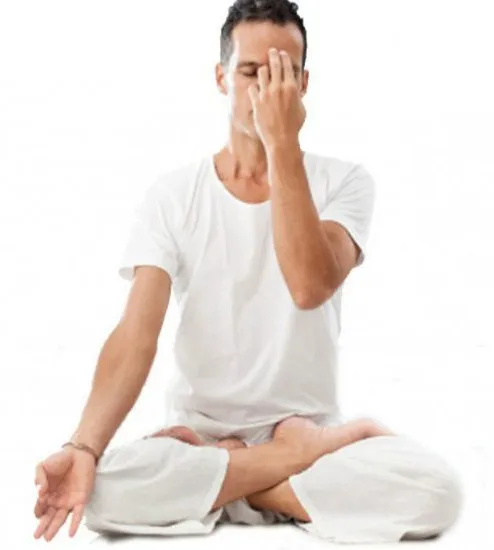
Frequently Asked Questions
Question: What is Alopecia?
Answer: Alopecia is the condition of temporary or permanent loss of hair from the scalp or whole body.
Question: What are the causes of Alopecia?
Answer: Alopecia is caused by various reasons like hereditary factors, hormonal changes, stress, hair treatments etc.
Question: How Ayurveda is beneficial in the management of Alopecia?
Answer: Ayurveda has unique treatment methods for Alopecia that include internal medicines, external therapies, purification methods, etc.
Question: What are the causes of Alopecia?
Answer: Usage of chemical-based shampoos, allergic manifestations, avoidance of head massage, head bath, poor hygiene of scalp are some of the factors thar cause alopecia.
Question: How Ayurveda can help in the treatment of Alopecia?
Answer: Depending on the root cause and vitiated dosha, Ayurveda offers many curative treatment measures along with avoidance of unwholesome food and some changes in lifestyle.
Question: Can Ayurveda treat Alopecia?
Answer: Ayurveda has a great potential to treat alopecia with harmless and effective medicines.
References
- Sushruta Samhita with Nibandhasangraha of Dalhanacharya edited by Vaidya Yadavji Trikam ji Acharaya, published by Chaukhambha Surbharati Prakashan, Varanasi, reprint 2017, Nidana Sthana, Chapter 13/34, p. 322.
- Astanga Hrudaya with Sarvanga Sundara teeka of Aruna Dutta & Ayurveda Rasayana of Hemadri edited by Pandit Hari Sadashiva Shastri Paradkara, published by Chaukhambha Surbharati Prakashan, Varanasi, reprint 2017, Sutra Sthana, Chapter 26/53, p.325.
- Ashtang Hrudaya by Vagbhata, Utharsthana, Sirorogavinjaneeyaadhyaya, Chapter 23, Sloka 25.
- Sahil Gupta, Child Health and Ayurveda, Edition 2021, Allergic Diseases in Children, Chapter No. 12, Page No.53-57.
Was this Page Helpful?
So IAFA Ayurvedic Root-Cause Treatment of Your Alopecia is Just 3 Steps Away!

01. Connect With Us
Share your history of illness or Book your appointment

02. Consult With Us
Dr. Gupta a certified Ayurvedic Allergist Consultant

03. Root Cause Treatment
Get an accurate diagnosis, medicines, diet & lifestyle change
Alopecia – Case Studies
Real Case Studies of Successfully Treated Patients from All Around the World by IAFA Ayurveda®.
-
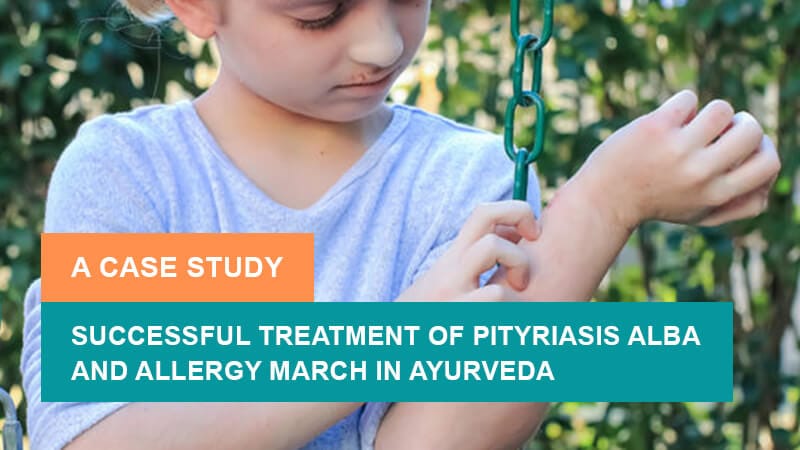
Successful Treatment of Pityriasis Alba and Allergy March in Ayurveda – A Case Study
It is a case study about successful treatment of Pityriasis Alba and…
-

Successful Treatment of Gallstones (Cholelithiasis) with Ayurvedic Medications – A Case Study
It is a case study about the successful treatment of Gallstones (Cholelithiasis)…
-
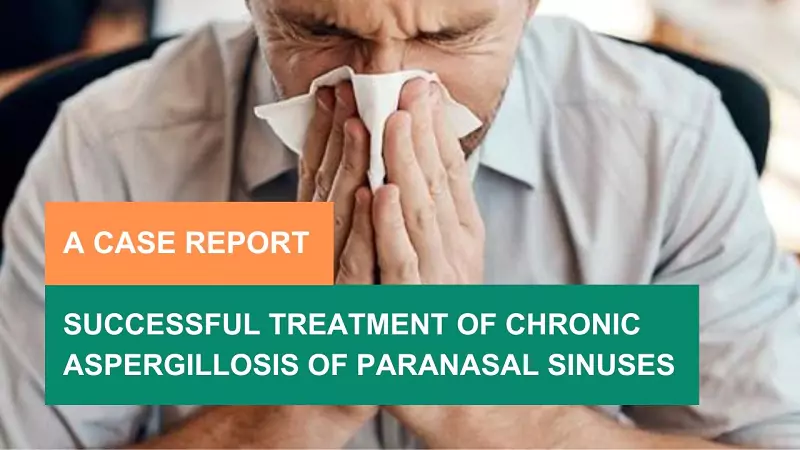
48-Year-Old Male Patient Got Relief from Chronic Aspergillosis of Paranasal Sinuses – A Case Study
Fungal infections can be treated with a high success rate by various…
-
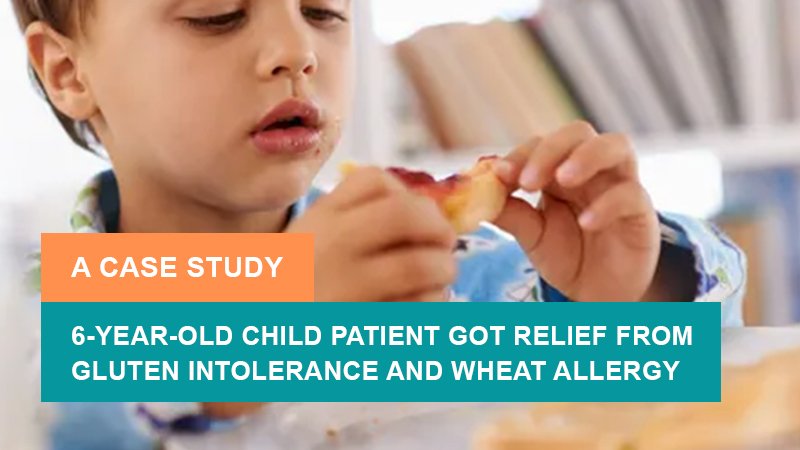
6-Year-Old Child Patient Got Relief from Gluten Intolerance and Wheat Allergy – A Case Study
It is a case study of a 6-year-old Child Patient who got…

